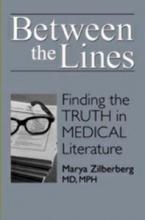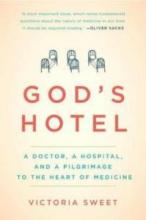Two new books and a news article triangulate some interesting thoughts on improving efficiency in medicine while causing less harm to patients – and what that really means.
IMNG Medical Media reporter Alicia Ault’s feature story on “Can More Be Done with Less?” describes a recent conference on “Avoiding Avoidable Care” that brought medical experts together to strategize on how to avoid unnecessary tests and treatment, which can harm patients.
Dr. Vikas Saini, an organizer of the conference, told her that patients often demand tests or procedures because they seek certainty and want to know that the physician cares. But test results often lead to false knowledge, said Dr. Saini of the Lown Cardiovascular Research Foundation, which cosponsored the meeting. The key for physicians, he said, is to convincingly explain to patients why the test or procedure is or is not a good idea, and to practice evidence-based medicine.
To do that, though, requires an ability to interpret medical research and help patients understand it. That’s where Dr. Marya D. Zilberberg’s new book comes in. Between the Lines: Finding the Truth in Medical Literature is a breezy 170-page primer that spends most of the first half of the book cheerleading for scientific uncertainty. She also reviews the hierarchies of quality in research and touches on heterogeneity, biases, and a few general pitfalls in interpreting studies.
The second half of Between the Lines goes a little deeper in explaining study design, validity, statistical analyses, and more, though never so deeply that a nonstatistician’s eyes will glaze over. Dr. Zilberberg, a consultant, teacher, and blogger at Healthcare, Inc., explains these dry subjects in an eminently readable fashion.
I found it a valuable refresher (especially Part Two) even though I’ve been covering medical news for over two decades, and I imagine it would be a great introduction for the uninitiated. Dr. Kenneth W. Lin, a family physician who teaches a course in evidence-based medicine at Georgetown University, posted an online review that called Between the Lines “a rare book that bridges the gulf between medical publications and the real world of practicing clinicians.” Paul D. Simmons, Ph.D., who teaches family medicine residents in Louisville, Ky., said in an online review that he hopes incorporating the book will decrease the number of residents who finish his rotation thinking that evidence-based medicine is impractical, takes too much time, requires a Ph.D. in biostatistics, and doesn’t apply to their careers.
A separate book approaches these themes in ways that question medicine’s sometimes heavy-handed emphasis on “evidence” and “efficiency.” In God’s Hotel: A Doctor, a Hospital, and a Pilgrimage to the Heart of Medicine, Dr. Victoria Sweet eloquently recounts her 20 years of working at a chronic-care hospital for the ill and indigent (considered the “last almshouse in America”) as it morphs into a “modern healthcare treatment facility.”
Dr. Sweet’s scathing depictions of “efficiency” at the expense of time with patients bolster her call for “slow medicine” and the (missing) research to compare the two.
Disclosure: I’ve known Dr. Sweet for many years and even consider her a friend. I esteemed the book on its merits, and so did neurologist and author Dr. Oliver Sacks, whose book-jacket blurb called it, “A most important book, which raises fundamental questions about the nature of medicine in our time. It should be required reading.”
Dr. Abigail Zuger’s review in The New York Times began, “It is probably pointless to suggest that all the individuals presently shaping our health care future spend a quiet weekend with ‘God’s Hotel,’ Dr. Victoria Sweet’s transcendent testament to health care past. Who interrupts cowboys in the midst of a stampede? But if you’re one of the millions of doctors and patients out there choking on their dust, this is the book for you. Its compulsively readable chapters go down like restorative sips of cool water, and its hard-core subversion cheers like a shot of gin.”
The synchronicity of these three works is a sign of the times. As physicians are asked to do more with less, these writings help us understand what you’ve got to work with.
–Sherry Boschert (@sherryboschert on Twitter)



